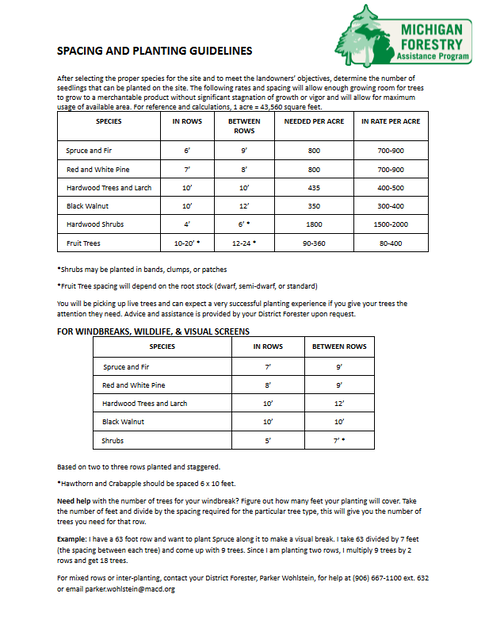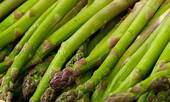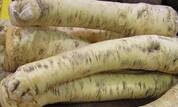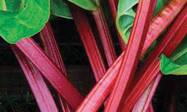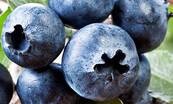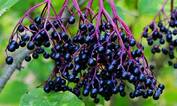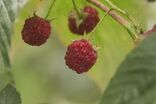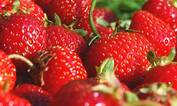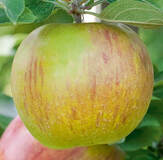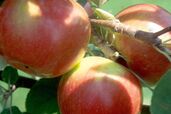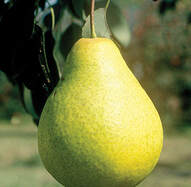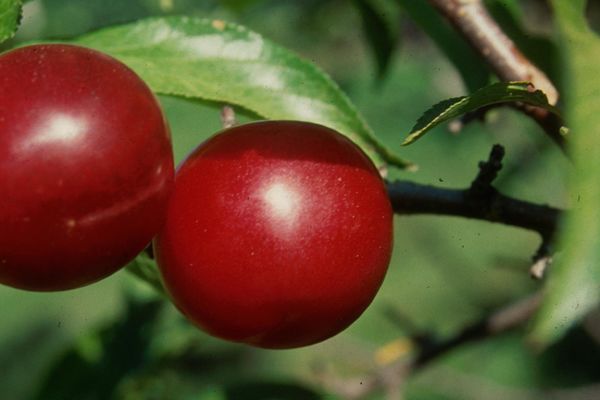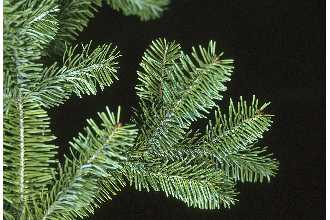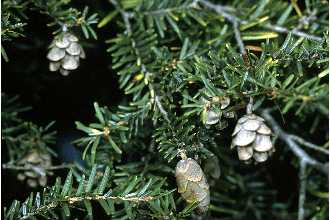2024 Tree Sale Fundraiser
Thank You for Ordering!
Pickup Date: Saturday, April 27th from 10am-Noon (est)
2025 Deadline to Order: Coming Soon!
Form with 2025 offerings: Coming Soon!
NOTE: Please print form using LANDSCAPE orientation. Form is double-sided.
Don't have a printer? No problem! Request a paper copy in the mail here.
The Ontonagon County Conservation District Board of Directors would like to thank the residents and landowners of Ontonagon County for your continued support of our natural resources. The annual tree and plant sale is our largest fund raising event of the year. All proceeds continue the Conservation District's programs.
Thank you to the many dedicated tree sale volunteers who assist us. Our tree sale fundraiser would not be successful without you! Our words cannot express our gratitude for the dedication of your time and talents to the Conservation District. If you are interested in becoming a tree sale volunteer, please email us at [email protected] or visit our website to find our volunteer application.
Thank you to the many dedicated tree sale volunteers who assist us. Our tree sale fundraiser would not be successful without you! Our words cannot express our gratitude for the dedication of your time and talents to the Conservation District. If you are interested in becoming a tree sale volunteer, please email us at [email protected] or visit our website to find our volunteer application.
Tips for establishing
Tree and Shrub Seedlings
- Consider what Hardiness Zone you are in.
- Know your site and soil and select the appropriate species.
- Prepare your site by reducing the amount of vegetative competition.
- Consider the need for protection from wildlife and weather.
- Plant seedlings as soon as possible after received. If planting is delayed, keep seedlings out of direct sunlight and in a cool place.
- Consider proper planting techniques and spacing. Tree and shrub spacing and densities depend on the purpose of the planting. If in doubt, talk to your district forester about the specifics of your planting project.
- The Forestry Assistance Program (FAP) forester helps citizens better understand, plan, manage, protect, and utilize forest resources at no cost.
| tree_spacing_and_planting_guidelines.pdf | |
| File Size: | 50 kb |
| File Type: | |
2024 Offerings:
For the Garden
& Ground cover
Asparagus (Roots)
|
Mary Washington- This variety has been the most popular asparagus in American gardens for the last century. Great taste and long green spears. Can be productive for 20+ years. Antique. Zone 2-9
Jersey Knight- Heavy producer of tender shoots. Performs well even in clay. Drought and frost tolerant. Disease resistant to Rust, Fusarium, Root Rot, Crown Rot, Cercospora. Hybrid male plant with little to no seed produced. Zone 3-12 |
Horseradish (Root)
Seed Potatoes
Yukon Gold- Early potato with rich buttery flavor. Sprout resistant. Keeps well.
Norland- Red mid-season potato. Good for boiling, baking, and frying. Widely adapted.
Yukon Gold- Early potato with rich buttery flavor. Sprout resistant. Keeps well.
Norland- Red mid-season potato. Good for boiling, baking, and frying. Widely adapted.
Rhubarb (Root Ball)
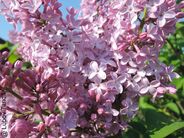
Lilac
Grandma's Hedge- Very fragrant flowers. Long-lived plants require very little care. Extremely hardy. Zone 3-7
Grandma's Hedge- Very fragrant flowers. Long-lived plants require very little care. Extremely hardy. Zone 3-7
Garden Rose
Easy Elegance (R) Music Box- Everblooming. Double blooms of creamy yellow centers surrounded by delicate pink. Disease resistant.
Easy Elegance (R) Music Box- Everblooming. Double blooms of creamy yellow centers surrounded by delicate pink. Disease resistant.
Peony
Sarah Bernhardt Pink- Classic huge double pink flowers fading to pale silvery tips. Deer resistant foliage.
Sarah Bernhardt Pink- Classic huge double pink flowers fading to pale silvery tips. Deer resistant foliage.
Fruit Plants & Shrubs
Blueberry
|
Bluetta- Early, large light blue berries. Mild sweet flavor. Commercial Use. Zone 4-7
Jersey- One of oldest, most widely grown varieties. Developed in 1916, released to the public in 1928. Northern high-bush variety with tall growth habit (6-10' tall and up to 5-6' wide). High yield of sweet juicy medium-large berries. Mid-season to late producer. Hardy and dependable, considered one of the best for harsher northern climates. Zone 4-8 Rancocas- Early. Cold hardy, medium sized sweet berry. Excellent for pie, muffins and pancakes. Vigorous. Zone 4-7 |
Grape
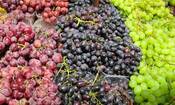
Catawba- Old American grape variety with large clusters of red-purple grapes. Sweet unique flavored muscadine. Good for fresh eating, jam, jelly, and wine. Zone 4-8
Concord- Sweet blue fruit. Makes the best jellies, juice, and sweet wine. Zone 4-8
Concord- Sweet blue fruit. Makes the best jellies, juice, and sweet wine. Zone 4-8
Raspberry
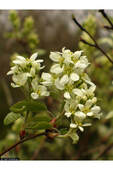
Serviceberry- AKA Juneberry. Purple-black fruit with with sweet, nutty flavor, rich in iron and copper. Beautiful white blooms in spring. Can live 20-85 years. Plants 3-15' tall. Valuable wildlife plant. Flowers are spring nectar source for pollinators. Fruit attracts songbirds, particularly cedar waxwings and other fruit-eating species! Hummingbirds love to nest in the upright growth. Deer will utilize plants as browse, as it is in the rose family just like apples. Good for woodland gardens and yard edges. Useful in erosion control and windbreak. Grows well in heavy clay soils. Good for cooking, pastries, jelly, syrup, and fresh eating. Zone 3-7
Strawberry (Root)
|
Ozark Beauty- Ever-bearing. Sweet berries ideal for desserts and jam. High yielding plants. Produces fruit throughout the growing season. Zone 4-8
Seascape- Ever-bearing, day neutral cultivar. Large, firm berries with excellent flavor. Produces fruit throughout the growing season. Prolific and reliable. Good disease resistance. Shallow root system suitable for either garden or container. Zone 4-7 Sparkle- June. Mid-season. Medium sized berries with excellent flavor. Zone 3-8 |
Fruit Trees
Apple
Semi-dwarf (SD) apple trees are favored for their abundant fruit crops without taking up much space. Semi-dwarf trees will grow to be 12-15 feet tall and wide, so we recommend spacing them 12-15 feet apart. Standard (S) is the largest tree size, at maturity up to 18 to 25 feet tall/wide.
Semi-dwarf (SD) apple trees are favored for their abundant fruit crops without taking up much space. Semi-dwarf trees will grow to be 12-15 feet tall and wide, so we recommend spacing them 12-15 feet apart. Standard (S) is the largest tree size, at maturity up to 18 to 25 feet tall/wide.
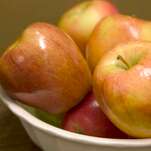
Honeycrisp (S)- Early-mid bloomer, standard, great pollinator. Crisp, crunchy exterior with juicy flesh that is a perfect balance between sweet and tart. Round yellow fruit with a red blush are excellent fresh. Ripens late mid-season with a prolonged harvest- it is known for its long hang time on the tree, the apples don't immediately drop upon ripening. 14-18' tall, medium sized tree that bears fruit at a young age (can overbear, so thinning of fruit on young trees is recommended.) Will store well in a cool, dark, dry location for 3-6 months. Disease resistant. Developed in Minnesota, extremely cold-hardy, thriving in temperatures as low as -30 degrees. Recent DNA testing indicates that the parentage includes Keepsake, Golden Delicious, and heirloom Duchess of Oldenberg varieties. Self-Fruitful in many climates, but yields can be improved by planting a pollinator: Choose another early or mid-blooming apple variety. Calcium improves fruit quality and is especially helpful in growing Honeycrisp. Zone 3-7
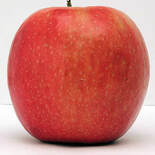
Wolf River (S)- Mid-late bloomer, standard size, Antique 1875 WI. Heirloom variety, originated on the farm of W.A. Springer in Wolf River, WI in 1875. Very large apples- often >1 pound each! Pale yellow skin with a pale dull red. Soft, tender, creamy white flesh. Mostly used for baking and pies, but can be a good applesauce and dessert apple. Holds its shape and requires very little additional sugar. Mid-season harvest. 12-16' strong tree, disease resistant to apple scab, powdery mildew, fire blight, and cedar apple rust. Requires different variety with same bloom period, like Honeycrisp or McIntosh. Zone 3/4-7
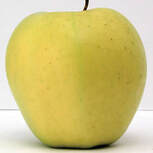
Yellow Transparent (S)- Early ripening. Crisp pale yellow apples with sweet mild white flesh. Antique variety originating in the 1800's in Russia. One of the earliest apples. Productive. Partially self-fertile. Cold hardy. Disease resistant to scab. Good for applesauce, cooking, freezing, drying, juice, and wine. Zone 3-8
Haralson (SD)- Medium-sized hard, crisp, tart red apples. Dual purpose. Keeps well, storage until March. Hardy winter variety. One of the most popular apples in Minnesota. University of Minnesota in 1923. Zone 3-6
Wodarz (S)- Considered to be one of the hardier apples. Yellow-green skin with pink blush on unevenly shaped apples. Firm and sweet. Vigorous good for eating and cooking. Stores up to 3 months. Tolerant to fireblight. From North Dakota. Zone 3-6
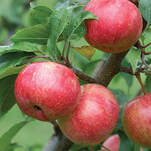
Crabapple
Chestnut (S)- Excellent pollinator for any apple variety with white blooms. 2" pale yellow with red blush. Open pollinated. Creamy white flesh is crisp with a sweet, nutty cider taste. Good for fresh eating, cooking, or jelly. Good for wildlife/deer. Standard size. Cold hardy, it was developed at the University of Minnesota in 1946. Zone 3-8
Chestnut (S)- Excellent pollinator for any apple variety with white blooms. 2" pale yellow with red blush. Open pollinated. Creamy white flesh is crisp with a sweet, nutty cider taste. Good for fresh eating, cooking, or jelly. Good for wildlife/deer. Standard size. Cold hardy, it was developed at the University of Minnesota in 1946. Zone 3-8
Pear
Tips for growing pears: https://extension.umn.edu/fruit/growing-pears
Note: If you want consistent fruit it is best to plant two pear varieties with compatible pollen or be certain there is a pear tree in the neighborhood.
Tips for growing pears: https://extension.umn.edu/fruit/growing-pears
Note: If you want consistent fruit it is best to plant two pear varieties with compatible pollen or be certain there is a pear tree in the neighborhood.
Ure (S)- Green-yellow, very juicy 2" fruit. Good for eating and canning. Developed in 1978 at Morden Research Station. Zone 3-7
Plum
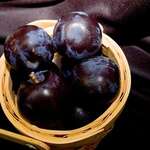
Black Ice (S)- Early ripening. Dark purple-black large fruit with juicy, sweet, exceptionally flavored red colored flesh. Produces one of the largest hybrid plums. Japanese-type plum (for large size) crossed with a cherry plum tree (for flavor), it was developed in Wisconsin for upper Midwestern hardiness. Cold hardy to -30F. Dessert plum. Excellent for fresh-eating and pies/tarts. Zone 3/4-8
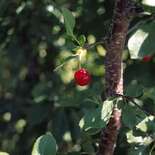
Cherry
Evans Bali (S)- Tart/sour bright red cherry with sweet notes in the yellow flesh. Exceptionally high yields. Self-pollinating. Originated in Canada near Edmonton Alberta and thrives in cold climates. Extremely hardy buds. Tree height 15-20 feet. Does not tolerate standing water. Wildlife value: bird attractant. Good for baking, pie, jam/jelly, and fresh eating when ripe. Zone 3/4- 9
Evans Bali (S)- Tart/sour bright red cherry with sweet notes in the yellow flesh. Exceptionally high yields. Self-pollinating. Originated in Canada near Edmonton Alberta and thrives in cold climates. Extremely hardy buds. Tree height 15-20 feet. Does not tolerate standing water. Wildlife value: bird attractant. Good for baking, pie, jam/jelly, and fresh eating when ripe. Zone 3/4- 9
Coniferous
Conifers are planted for a variety of reasons, including windbreaks and shelter-belts, wildlife corridors, plantations, and screens. Conifer seedlings, or "plugs", are smaller and less expensive than transplants, which makes them a good choice for large plantings. Transplants, or "bare-roots", are a bit taller and much sturdier, but a little more difficult to plant. They are an excellent choice for screens and windbreaks. On a tree order form, you may see something like this: White Spruce (2-2). This means that the tree is four years old, having spent two years in a seedling bed and two years in a transplant bed. Alternately, you may see plug sized seedlings on an order sheet which are 3-6 inches tall.
(clockwise from top left: Balsam Fir, Hemlock, Red Pine, White Pine) Click "Native" below or photo above for additional details about each individual species.
Balsam Fir (Native)- Wonderful for holidays, trees, and wildlife
Hemlock (Native)- Prefers moist but well-drained soils
Red Pine (Native)- Prune themselves, sandy soil, telephone trees
White Pine (Native)- Grows almost anywhere, wildlife friendly
White Spruce (Native)- Moist yet drained soils. Will grow in sand and clay
White Cedar (Native)- Loves wetlands and moist areas
Hemlock (Native)- Prefers moist but well-drained soils
Red Pine (Native)- Prune themselves, sandy soil, telephone trees
White Pine (Native)- Grows almost anywhere, wildlife friendly
White Spruce (Native)- Moist yet drained soils. Will grow in sand and clay
White Cedar (Native)- Loves wetlands and moist areas
Deciduous
Deciduous Shrubs
Shrubs for pollinators, wildlife, and you!
Shrubs for pollinators, wildlife, and you!
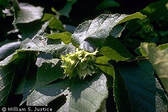
American Hazelnut (Native)- Attracts birds and squirrels. Good for windbreaks. Moist to dry, but grows best in well drained soils. Bears abundant crops of small, edible sweet tasting nuts. Plant multiple to ensure pollination. Zone 4-9
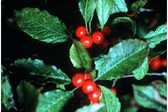
Winterberry Holly (Native)- Good for honey bees. Attracts birds and butterflies. Bright red berries persist through winter. Good for bio-remediation. Likes wet soils.
|
Highbush Cranberry- Drooping clusters of bright red berries that sweeten over winter. Good for cedar waxwing and other birds. Very tart berries are excellent in jams and jellies. Prefers consistent moisture, but tolerates wide range of soils in full sun to part shade. Large, hardy shrub up to 8-12' tall and 10' wide. Not self-fertile, cross pollination from 2-3 shrubs is needed for fruiting.
|
Deciduous Trees
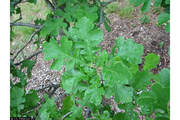
Bur Oak (Native)- AKA mossy cup oak, lives 200-400 years. Note: saplings should be protected from deer.
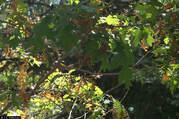
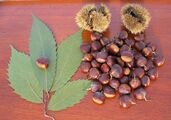
American Chestnut- Large, fast growing, broad-leaved deciduous tree in beech family. Burred fruit with edible nuts. 60-80' height and 30-40' spread. Growth rate of 12-24+" per year once established. Clay, loamy, sandy soils. At least two chestnuts planted no more than 200' apart are required for producing nuts. Zone 4-8
** 'Apparently Blight Free' with some resistance American Chestnut-- no gene mod.
3/13 Update: SOLD OUT of chestnut.
** 'Apparently Blight Free' with some resistance American Chestnut-- no gene mod.
3/13 Update: SOLD OUT of chestnut.
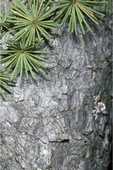
Tamarack (Native)- Deciduous conifer, needles turn golden in autumn. Able to survive temperatures down to at least −85 °F. Tolerates a wide range of soil conditions but grow most commonly in low-lying areas and bogs, in wet to moist organic soils such as sphagnum, peat, and woody peat. Adapted to reproduce successfully on burned areas, common pioneer plant after fires. Intolerant of shade, it must be the over-story when mixed with other species. Wildlife use the tree for food and nesting.
Tree Protectors,
Planting Items, & More
Protect your trees and seedlings from wildlife damage.
Not offered in 2025.
Grow Tube Tree Protectors- Plantra brand 5' Sunflex grow tubes with vented tubes.
Garden Stakes- all steel 6' plant stakes to be used with grow tubes or in the garden.
Not offered in 2025.
Grow Tube Tree Protectors- Plantra brand 5' Sunflex grow tubes with vented tubes.
Garden Stakes- all steel 6' plant stakes to be used with grow tubes or in the garden.
